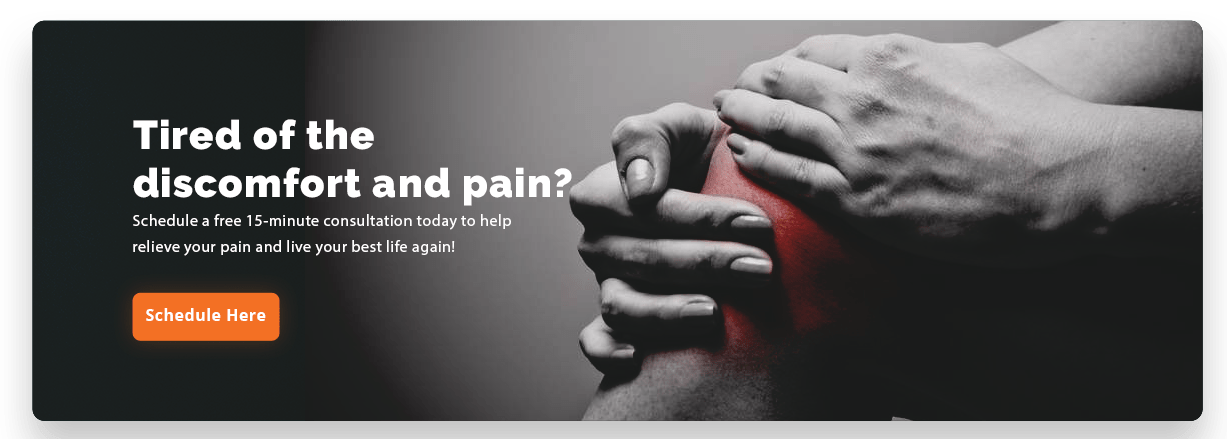“There’s always a reason to look up.” ― A.D. Posey
 It has been estimated that most people have a 70 percent chance of suffering from long-term neck pain at some point in life. A much smaller percentage will indeed suffer from chronic or permanent neck pain, usually because of traumatic injury or some degenerative bone condition.
It has been estimated that most people have a 70 percent chance of suffering from long-term neck pain at some point in life. A much smaller percentage will indeed suffer from chronic or permanent neck pain, usually because of traumatic injury or some degenerative bone condition.
However, most people will likely suffer from short-term, or acute, neck pain on occasion and possible from longer-term neck pain from childhood to old age.
Temporary neck pain is typically the result of strain on the muscles and tendons that hold up the head. Keep in mind that an adult head weighs around 10 to 11 pounds (4.5 to 5 kg). It’s easy to understand how supporting that much weight over 20 hours each day, every day can lead to fatigue and stress in the neck muscles. In addition, when sudden or awkward movements jerk the head to one side, or it’s been kept in a static position for a long time, muscles and tendons can stiffen.
This is especially common for repetitive motion activities or simply long periods of time sitting at a desk.
The neck can move forward and backward, as well as side to side. The anatomical term “flexion” refers to forward movement of the head. When the chin is against the chest, for example, the neck is flexed. The opposite motion is known as extension. Extension refers to movement in the posterior direction.
For most people, too much work at the computer can lead to extended periods of neck flexion, which leads to several painful symptoms. Others, however, may perform tasks that require long stretches of time looking up, which means long-term extension of the neck muscles.
And, probably everyone has woken up with a sore neck, likely caused by no pillow or sleeping with one’s head tilted too sharply to one side or another.
Unfortunately, while these types of neck pain can be short-lived and comparatively mild, sometimes they can also lead to pain occurring in the upper extremities and head. This can be the result of sustained, or long-term and excessive flexion or because of too much extension.
Typical Causes of Neck Pain
While there are some physiological conditions that can cause severe and chronic neck pain, such as cervical dystonia (spasmodic torticollis) and cervical spondylosis, there are many external causes. Here are a few of the more common culprits according to the Mayo Clinic:
- Carrying a heavy item on one shoulder
- Holding a phone between your shoulder and neck
- Emotional stress
- Muscle strain
- Poor posture
- Sleeping on your abdomen
- Sleeping with too many or too few pillows
- Tension headache
- TMJ disorders
- Trauma from accidents or falls
- Whiplash
Another cause of more chronic or recurring neck pain are mechanical dysfunctions that cause abnormal and limited neck movement. Unfortunately, there are also gradual degenerative conditions that can cause neck pain as well has pinched, bulging and even herniated discs.
On the bright side, the causes of acute neck pain can usually be avoided or easily corrected. This allows the pain to be treated without surgery and many times even without medications other than some small doses of NSAIDs or analgesics.
For many common causes of moderate, acute neck pain, Cleveland Clinic recommends you try these simple remedies:
- Apply heat or ice to the painful area. Use ice for the first 48 to 72 hours, then use heat after that. Heat may be applied with warm showers, hot compresses or a heating pad. Be sure not to fall asleep with a heating pad or ice bag in place to avoid skin injuries.
- Take over-the-counter pain relievers such as ibuprofen or acetaminophen.
- Keep moving but avoid jerking or painful activities. This helps calm your symptoms and reduce inflammation.
- Do slow range-of-motion exercises, up and down, side to side, and from ear to ear. This helps to gently stretch the neck muscles.
- Have a partner gently massage the sore or painful areas.
- Try sleeping on a firm mattress without a pillow or with a special neck pillow.

Active Release Technique for Neck Pain
Manual therapies such as myofascial release and certain types of sports massage can be used to relieve various types of neck pain. These therapies can also be combined with exercise, physical therapy, chiropractic care, rest, ice and heat to conquer the pain.
And, depending on the root cause of the pain, they can also be used along with medications, injections, and even surgery.
One manual therapy that works quite well for neck pain is known as Active Release Technique®, or ART®. This technique is used to treat your body’s soft tissue through a combination of manipulation and movement. It is a technique that’s been around for over 30 years and has an impressive and proven track record.
ART® works by identifying, isolating, and targeting the affected area of the body to break up scar tissue. This, in turn, promotes increased blood flow and faster healing of injuries. ART® is successfully used to treat problems with:
- muscles
- ligaments
- tendons
- nerves
It was developed and first used by Dr. P. Michael Leahy, a chiropractor, to treat soft tissue disorders in elite athletes and has since been used to treat millions of people to date.
ART can be used to treat pain and other symptoms caused by injury or damage to key components of the body. These include the fascia, the fibrous connective tissue that protects and supports muscles and organs. Issues such as inflammation of fascia tissue can cause extreme pain and stiffness. A common fascia tissue condition is plantar fasciitis, for example.
In addition, ART can be used on major muscle groups affected by strains and pulls from overuse or trauma. This can include muscles in your neck and shoulders, causing neck pain. And, finally, ART can be applied to tendons and ligaments. While similar in function, they differ in that tendons connect muscles to bone and ligaments connect bone to bone.
A few years ago, The Journal of Physical Therapy Science reported the results of an extensive study on the effects of the active release technique® (ART®) on pain and range of motion of patients with chronic neck pain. In addition, the study compared those effects with those of joint mobilization (JM).
The study noted that,
“A common cause of neck pain is mechanical dysfunction, which causes abnormal joint movement, as abnormal cervical joint mobility inside the joint capsule can limit neck movement. Additionally, unbalanced soft tissue around the head and neck structure can place limits on the range of motion (ROM) of the head and cause neck pain. Therefore, many treatments are performed with the aim of restoring soft tissue function or mobility to the joints in patients with chronic neck pain. Joint mobilization (JM) and joint manipulation are the most widely used methods to increase mobility inside the joint capsule.”
However, the study concluded that
“ART demonstrated a trend toward greater effectiveness for patients with neck pain involving soft tissue injury. Therefore, ART appears to be a better option for treating patients with chronic neck pain in the clinical setting.”
Neck Pain Relief and Pain and Performance Solutions
When you come to your first appointment, we want to learn about your present discomfort as well as any history of discomfort. Getting neck pain relief with ART begins once we understand where and how your pain started.
A full examination will help us determine which form of treatment is best suited to get you on your road to recovery. Your trust in us is key, as is your honesty. Ultimately, getting your body healthy and working properly is the only way to achieve total recovery. So, don’t hesitate to reach out. We are here to help and will answer any questions that you may have.
Our goal is to work through the sequence of pain and dysfunction in order to get your body healthy and working properly and to achieve total recovery. Don’t hesitate to reach out. We are here to help and will answer any questions that you may have. You can reach us at (707) 636-4404 or by filling out our online contact form
FAQs About Neck Pain Relief and Active Release Technique (ART®)
1. What are the common causes of neck pain?
Neck pain often stems from poor posture, muscle strain, or injuries like whiplash. Sleeping awkwardly, carrying heavy bags on one shoulder, or spending long hours at a desk can also contribute. Chronic pain may be linked to conditions like cervical spondylosis or pinched nerves.
2. How can neck pain be relieved at home?
Apply ice for the first 48 hours, then switch to heat. Perform gentle neck stretches, maintain good posture, and take over-the-counter pain relievers like ibuprofen. A firm mattress and proper neck support while sleeping can also help.
3. What is Active Release Technique (ART®)?
ART® is a manual therapy that targets soft tissue injuries by breaking down scar tissue, improving blood flow, and promoting healing. It’s effective for pain in muscles, ligaments, and tendons caused by overuse or trauma.
4. How does ART® compare to other neck pain treatments?
Studies show ART® is more effective than joint mobilization for chronic neck pain, particularly when soft tissue damage is involved. It restores mobility and reduces pain more effectively.
5. Can poor posture lead to chronic neck pain?
Yes, long periods of slouching or extended neck flexion, like looking down at a phone or computer, strain neck muscles and may lead to chronic pain.
6. What are the best sleeping positions for neck pain relief?
Sleeping on your back with a supportive neck pillow or on your side with proper head alignment can reduce strain. Avoid sleeping on your stomach as it forces the neck into awkward angles.
7. Can stress cause neck pain?
Absolutely. Stress often leads to muscle tension, especially in the neck and shoulders, which can result in stiffness and pain over time.
8. Is ART® suitable for all types of neck pain?
ART® works best for soft tissue injuries, overuse, and trauma-related pain. However, it may not be ideal for severe structural issues like fractures or advanced arthritis.
9. How quickly does ART® provide relief for neck pain?
Many people experience noticeable relief after just a few sessions. Results vary depending on the severity and cause of the pain.
10. When should I see a professional for neck pain?
Seek help if pain persists for more than a week, is severe, or includes symptoms like numbness, weakness, or shooting pain down your arms. A professional can diagnose and recommend appropriate treatment.


